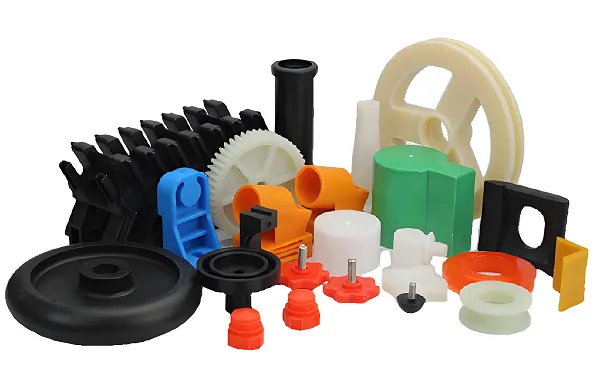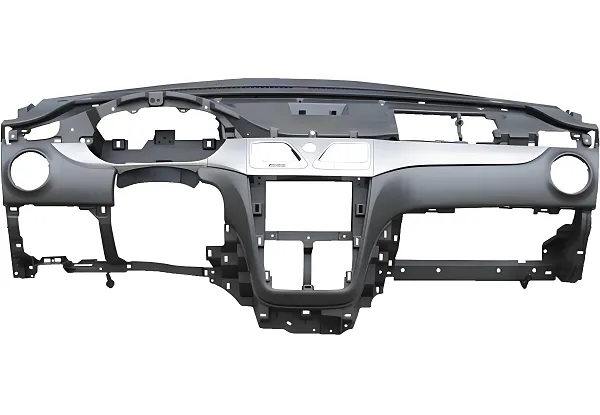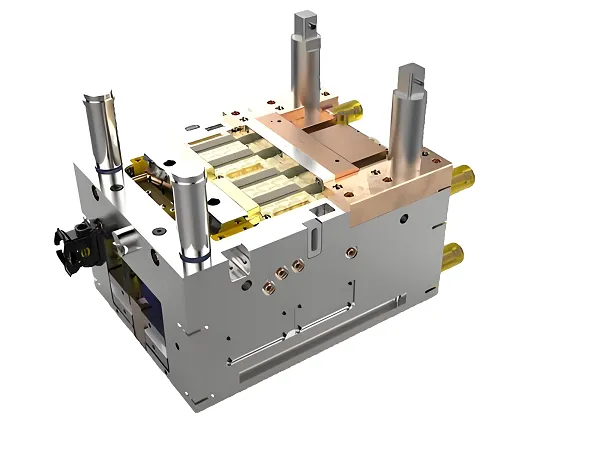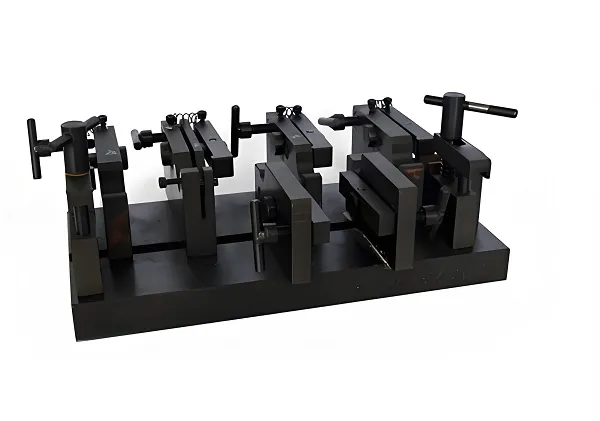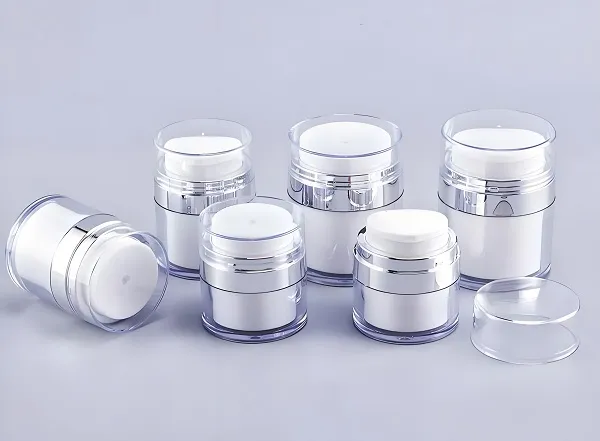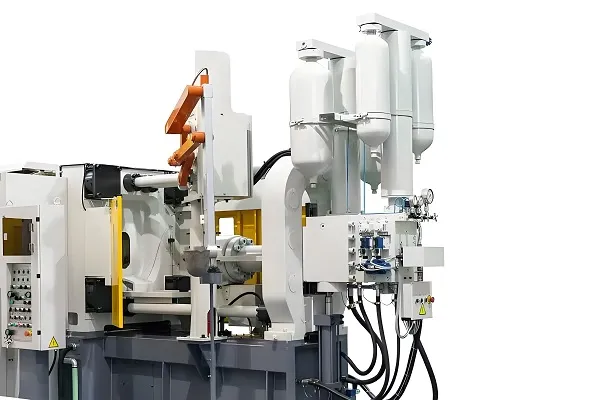Plastic mold is an indispensable tool in the plastic processing industry, which is matched with plastic molding machine to give plastic products complete configuration and precise size. The following is a detailed introduction to plastic molds and detailed parameters:
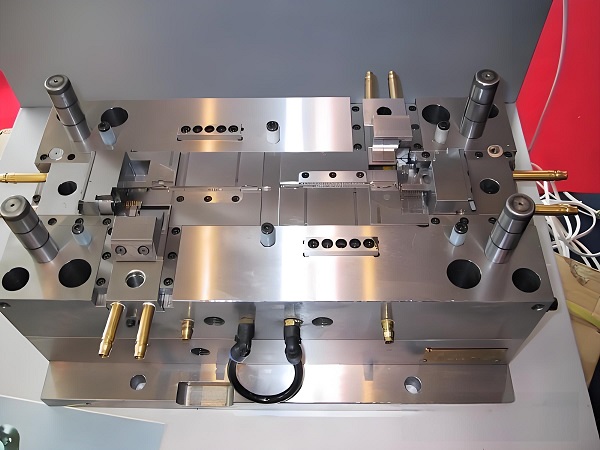
1.Basic overview of plastic mold
Definition: Plastic mold is a combination of molds used for compression molding, extrusion molding, injection molding, blow molding and low-foam molding in the plastics processing industry, which realizes the molding of the products by giving the plastic products a complete configuration and precise dimensions.
Applications: Widely used in automotive, home appliances, electronic communications, daily necessities and other fields.
Working Principle: When injection molding, the mold is clamped on the injection molding machine, the molten plastic is injected into the molding cavity and cooled in the cavity, then the upper and lower molds are separated, and the products are ejected from the mold cavity through the ejector system to leave the mold, and finally the molds are closed again to carry out the next injection, the whole process of injection molding is cyclic.
2.Detailed parameters of plastic mold
Mold structure
Basic components: generally consists of two parts, the moving mold and the fixed mold, the moving mold is mounted on the moving template of the injection molding machine, and the fixed mold is mounted on the fixed template of the injection molding machine.
Main components: including pouring system (main flow channel, cold material cavity, manifold and gate, etc.), molding parts (moving mold, fixed mold, cavity, core, molding rod and exhaust port, etc.), temperature regulating system, structural parts, etc.
Mold materials
Commonly used materials: injection mold materials mainly include carbon structural steel, carbon tool steel, alloy tool steel, high-speed steel and so on. These materials are characterized by high hardness, good processability, wear resistance and impact resistance.
Special materials: for some special requirements of the mold, such as corrosion-resistant molds, will be made of corrosion-resistant hard steel materials, or its molding surface to take anti-corrosion measures.
● Injection molding process parameters (high-density polyethylene HDPE and polypropylene PP, for example)
Barrel temperature:
HDPE: 30 to 50°C in the feeding zone (50°C is recommended), with the temperature in each zone gradually increasing to 220 to 300°C (recommended values are 200°C, 210°C, 230°C, and 240°C, respectively), and the nozzle temperature is 220 to 300°C (240°C is recommended).
PP: similar to HDPE, but the recommended value of each zone temperature is slightly different, such as zone 2 is recommended 220 ℃, zone 3 and zone 4 is recommended 240 ℃.
Mold temperature: 20-60℃ for HDPE, 20-70℃ for PP.
Injection pressure: Both are recommended to avoid excessive injection pressure, generally 80 to 140MPa (800 to 1400bar), except for thin-walled packaging containers.
Holding pressure: about 30% to 60% of the injection pressure to ensure the dimensional accuracy of the product.
Injection speed: High injection speed is needed for thin-walled packaging containers, and medium injection speed is suitable for other kinds of plastic products.
Screw speed: High screw speed (linear speed of 1.3m/s) is permissible, provided that the plasticizing process is completed before the end of the cooling time.
● Other parameters
Ratio of mold flow length to wall thickness: generally 50:1 to 100:1.
Melt temperature: 220~280℃ for both HDPE and PP.
Back pressure: 5~20MPa (50~200bar), too low back pressure is easy to cause uneven weight and color dispersion of products.
Metering stroke: according to the mold and screw diameter to determine, such as 0.5 ~ 4D (minimum value to a larger value).
Recycling rate: HDPE can reach 100% recycling.
Shrinkage: HDPE is 1.2~2.5%, PP shrinkage is similar, but the specific value may vary depending on the material and production conditions.
3.Classification of plastic molds
According to the different molding methods, plastic molds can be divided into injection molding molds, extrusion molds, compression molding molds, blow molding molds and so on. Each kind of mold has its specific structure and application scene.
4.Manufacturing and acceptance of plastic molds
Manufacturing process: including mold design, material selection, processing and manufacturing, assembly and debugging.
Acceptance criteria: mainly check the appearance of the mold, size, fit precision, material properties, etc. whether it meets the design requirements and manufacturing standards.
In summary, plastic mold is an important tool in the plastic processing industry, with complex structure, diverse materials and fine process parameters. Understanding these parameters and related knowledge is important for improving the quality and productivity of plastic products.
Customized Plastic Mould FAQ
● What is the process of custom plastic mold?
The process of customized plastic mold usually includes the following steps:
Demand analysis: Communicate with customers to clarify product requirements, material selection, size specification, production batch, etc.
Mold design: 3D design and modeling according to the demand, and mold flow analysis to ensure the injection molding effect.
Material Selection: Select the appropriate mold material according to the use of the mold and the production environment.
Mould processing: CNC machining, EDM, wire-cutting and other processes are used to process the mold precisely.
Mold assembly and debugging: assembling the processed mold parts and debugging to ensure that the mold can operate normally.
Mould trial and optimization: carry out mould trial in the actual production environment, and make necessary adjustments and optimization to the mould according to the results of the trial.
Delivery and after-sales service: Deliver the mold to the customer and provide necessary technical support and after-sales service.
● How long does it take to customize a plastic mold?
The time required for a customized plastic mold varies depending on the complexity of the mold, the production capacity of the manufacturer and the needs of the customer. Generally speaking, the whole process from requirement analysis to mold delivery may take weeks to months. The exact time needs to be determined after detailed communication with the customer and the manufacturer.
● How to ensure the precision and quality of the customized plastic mold?
The following measures can be taken to ensure the precision and quality of customized plastic moulds:
High-precision machining: use high-precision CNC machine tools for machining to ensure the dimensional accuracy and surface quality of the mold.
Strict quality control: carry out quality inspection and control of multiple processes during the production process to ensure that each link meets the quality requirements.
Trial mold verification: carry out trial molds in the actual production environment to verify the molding effect and product quality, and make adjustments and optimization according to the results of the trial molds.
After-sales service: provide perfect after-sales service, solve the problems encountered by customers in the process of use in a timely manner to ensure the stable operation of the mold.
● How is the price of customized plastic mould determined?
The price of customized plastic mould is affected by many factors, including the complexity of the mould, material cost, processing cost, production cycle and so on. Generally speaking, the calculation of the price of the mold will take these factors into consideration and will be determined after detailed communication with the customer. In addition, the price quoted by different manufacturers may also vary due to technical strength, production scale and other factors.
● What are the material options for custom plastic molds?
There are a wide range of material choices for custom plastic molds, and common materials include carbon structural steel, carbon tool steel, alloy tool steel, high-speed steel, and so on. The exact choice of material depends on the purpose of the mold and the production environment. For example, for molds that require high corrosion resistance, you can choose corrosion-resistant hard steel materials; for molds that require high wear resistance, you can choose high wear-resistant alloy steel and so on.
● What are the considerations for the maintenance of custom plastic molds?
Maintenance of custom plastic molds is crucial to extend the service life of the molds and improve production efficiency. Here are some precautions:
Regular cleaning: Keep the surface of the mold clean to avoid the accumulation of oil and impurities.
Correct use: Use the mold correctly according to the operating procedures to avoid damage to the mold caused by overuse or improper operation.
Regular lubrication: Regularly lubricate the sliding parts of the mold to ensure the smooth operation of the mold.
Regular Inspection: Regularly inspect the wear and tear of the mold, and timely replace or repair parts that are badly worn.
Proper storage: the mold should be properly stored when not in use to avoid moisture, corrosion or other damage.
With the above answers, we hope to help you better understand the relevant issues of custom plastic mold service.

